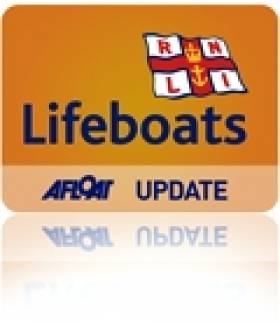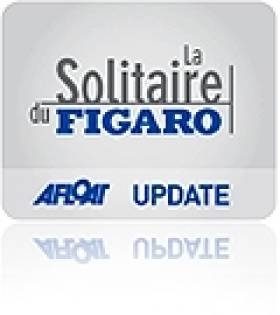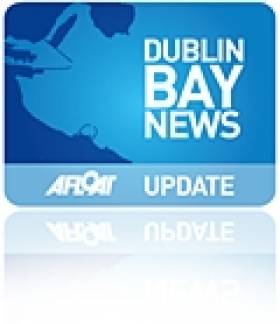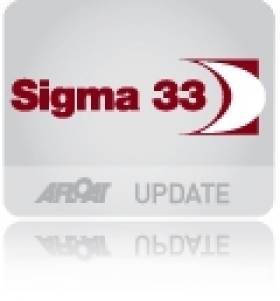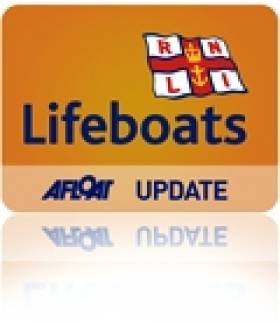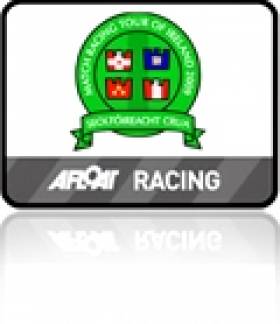Displaying items by tag: Dun Laoghaire
Free Lifejacket Check in Dun Laoghaire Today
With the summer boating season coming to a close, the RNLI’s Sea Safety team is back in Dun Laoghaire this morning and people who use the water are being invited to get their lifejackets checked out for free and find out more about this vital piece of boating kit.
It's an ideal opportunity to get the jackets checked before putting them away for the winter or indeed before the start of the different winter series on the Bay.
The RNLI carried out a similar service during the summer and on that occasion Over 90% of lifejackets tested at Ireland's two biggest sailing centres failed the simple checks.
From 91 jackets tested in Cork and Dublin, 83 failed the free inspection.
The annual Lifejacket check service carried out by the institute was only taken up by 40 sailors from an estimated 1,000 competing crews at Cork week. 35 failed the test.
The RNLI lifejacket clinic took place yesterday at Dun Laoghaire marina and takes place again today.
The RNLI’s lifejacket campaign, first launched in June 2007, aims to encourage all who go to sea in their leisure time to always put their lifejackets on when going to sea, and then decide when (if at all) to take it off.
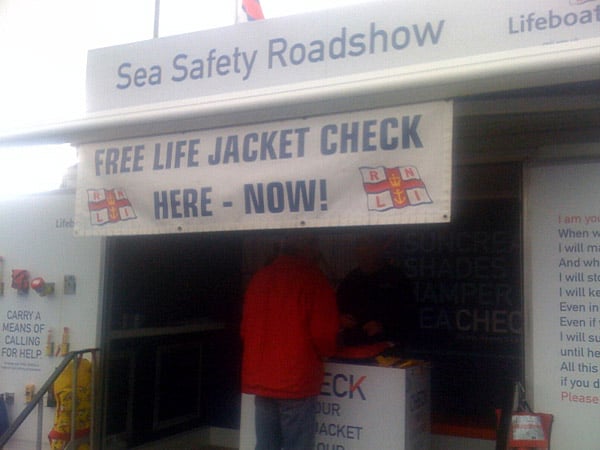
RNLI Divisional Sea Safety Manager, Nicola Davies, explains:
‘A lifejacket is useless unless worn, if it is worn incorrectly or if it is not in full working order. It’s much safer to get into the habit of wearing a lifejacket at all times when afloat, because it means you’ll be familiar with your particular lifejacket and how to operate it should an emergency situation unfold. In the summer months when boat owners may take family and friends who don’t often go afloat, it’s even more crucial to ensure that all on board, including babies and children, are wearing a well-fitted lifejacket.
‘A correctly fitting lifejacket will keep you afloat so that, should you end up in the water, you have time to overcome the initial shock and you can begin to think about survival. It will also keep your airways clear of the water, which is absolutely crucial because it only takes just a cup full of water in the lungs to make survival difficult and just over a litre to drown. A lifejacket also buys you time, this will allow for the search and rescue services to come to your aid. Our advice is not meant to spoil the fun of water users, but it is founded on the years of experience of RNLI lifeboat crew who know how unpredictable the weather can be and how quickly things can go wrong at sea.’
Lifejackets should not only be worn, but they need regular maintenance checks too. They should be stored in a dry, well-aired area when not in use. RNLI Sea Safety managers and volunteers around the coast of the UK and Ireland found that almost 35 per cent of lifejackets they’ve looked at during RNLI Sea Checks would, in their opinion, fail to operate.
Related Safety posts
RNLI Lifeboats in Ireland
Safety News
Rescue News from RNLI Lifeboats in Ireland
Coast Guard News from Ireland
Water Safety News from Ireland
Marine Casualty Investigation Board News
Marine Warnings
Dun Laoghaire to Host Top French Race in 2011
In a major announcement for Dun Laoghaire sailing a top French fixture involving 50 single handed yachts will visit the east coast port next Summer. Dun Laoghaire will be the only stop over outside France for next year's prestigious La Solitaire du Figaro race.
The race is regarded as one of the world's solo sailing great events and one of the toughest on the international sailing calendar.
Although having strong connections with Ireland this is the first time the 42 year old fixture will visit Ireland's largest sailing centre.
The fleet will moor in Dun Laoghaire harbour at the finish of the second leg and hosted by the National Yacht Club. They are expected to stay for a week.
This year the race visited Kinsale and in the past has also visited the Irish ports of Crosshaven, Howth and Dingle.
One month since the finish of the Solitaire du Figaro 2010, event organisers are already looking ahead, to 2011. The 42nd edition announces a new route: four legs, four French ports and one foreign stopover. The full details will be unveiled at the Paris Boat Show, on Friday December 3rd.
La Solitaire is going back to its roots. Perros-Guirec and Brittany from where the race will start on Sunday, 31st July 2011, are the most faithful of all host ports in the history of the race as Perros-Guirec has the record number of participations, this being the 16th time that the town will welcome the race. The last time was in 2005 and there is no doubt that Perros-Guirec will do its absolute best for this comeback.
The second French stopover in 2011 will be Caen, where the race will go back for the third time. The harbour and the village are ideally situated in the city centre and will surely gather thousands of visitors during the week long stay, with a full schedule of social events organised by the local municipality.
The third French rendez-vous is les Sables d'Olonne, which requires little introduction. In 2007, the port in the Vendée region celebrated the victory of Michel Desjoyeaux and since then the local authorities and the town live in very close ties to yachting, always ready to welcome sailors of all sorts, and namely from the Vendée Globe race... undoubtedly the people from Les Sables will show a very warm welcome to the skippers competing on the 42nd edition of La Solitaire next summer, as they have already done on six occasions on previous occasions as a host port for a race start or finish.
Dieppe will host the finish and close of La Solitaire du Figaro 2011 race. The Haute-Normandie region town expects to see the finish on a around August 24th. The town first hosted the race in 2009, regarded as a great success and one that the organisers wish to repeat by returning of for the finish. Locals in Dieppe will welcome the fleet over the final miles and will put on a whole host of celebrations through to Sunday 28th of August for the traditional final parade sail.
Just one stop over outside of France is planned and this is to be held in Ireland. La Solitaire will go to Dún Laoghaire for the first time, just ten minutes from the bustling town centre of Dublin at the finish of the second leg. The second stage promises to be a nice discovery for the Figaro sailors who will appreciate the charming Bay of Dublin and National Yacht Club's members warm welcome.
Perros-Guirec, Caen, Dún Laoghaire, Les Sables d'Olonne and Dieppe: five cities for a 42nd edition marked by many novelties. Sailing across the Channel, the Atlantic ocean, the Irish sea and the Celtic sea, the Solitaire du Figaro 2011 guarantees to be one of the season's greatest sports events.
Preparing for La Solitaire du Figaro here
Latest news for La Solitaire du Figaro hereIrish Match Racing Gets Recognition it Deserves
Match Racing has been given full approval by the national sailing association. I reported a few weeks ago that Match Racing Ireland, which organises the racing, had made application to the Irish Sailing Association. This has been approved.
"We are now a recognised Category 3 organisation within the ISA and hope this will mean we can send a representative to the All-Ireland championships, dependent on an invitation to us. Being recognised as a formal body is important for funding or when individual teams need support at international events," Ric Morris of Match Racing Ireland told me. "Bringing people through from college sailing is something we are very interested in and we are at the moment targeting the 2012 World University Match Racing Championships in France."
That may mean having to get hold of a couple of J24s, the boats used for that event. Match racing here has so far been concentrated in the ISA J80 fleet. Ric said he was "confident match racing will continue to flourish. The question will be the scope of it. Howth, Lough Derg and Dun Laoghaire clubs have confirmed they will run match racing next year."
Next month Kinsale will be the location for two match racing events - the ISA Women's Match Race Championship on October 9 and 10 followed by the Open Match Racing Championships from October 22-25.
Dragons Are Still Alive
The English are known for preferring that the rest of the world would speak their language. That attitude resulted in a Norwegian-designed yacht being called a Dragon.
Sailed by a helm and crew of two, it was designed by Norwegian Olympic sailor, Johan Anker, in 1929 with two berths for cruising in his home waters. The boat became so popular that, within ten years, it had spread all over Europe and become established in the top echelons of yacht racing. The Clyde Yacht Association presented the Gold Cup to the class in 1937.

Dragons competing off Kinsale. Photo: Bob Bateman. Gallery HERE.
During negotiations for the official recognition of the boat by the international sailing federation, a translation of Anker's name into 'Draggen' was rejected by the English yachting association which found 'Dragon' easier. The name was applied to the boat. Johan Anker was killed in World War Two. After the war his family waived design royalties to allow English yards build the boats, "as a token of appreciation for British support of Norway" when it was invaded by the Germans. That led to an increase in its popularity.
Dragons raced their South Coast Championship off Kinsale with ranking points to be won for the World and European Championships. Local club sailors were hoping to end class domination by Dun Laoghaire, but just fell short of their target.
Andrew Craig sailing Chimaera took the South Coast title back to the Royal St.George in Dun Laoghaire, while his clubmate Martin Byrne in Jaguar was second. Cameron Good, Henry Kingston and Simon Furney, a long-established Kinsale team sailed Little Fella, to third overall, with club colleague James Mathews helming Diva, crewed by Rick and Rob Johnson in fourth.
I have heard the Dragons described as "old worldly" but the class is alive and well to judge from the racing in plenty of breeze off Kinsale, where the Dragon Gold Cup, a world event, will be held in 2012. Kinsale Yacht Club will also host the national championships next year.
KYC is and will be, a busy place.
• This article is reprinted by permission of the CORK EVENING ECHO in which Tom MacSweeney writes maritime columns twice weekly. Evening Echo website: www.eecho.ie
Government Begins Review of Irish Ports
Minister for Transport Noel Dempsey T.D. today announced the launch of a national ports policy review with the publication of a consultation document.
There are ten State commercial port companies established and operating pursuant to the terms of the Harbours Acts 1996 - 2009; Cork, Drogheda, Dublin, Dundalk, Dún Laoghaire, Galway, New Ross, Shannon Foynes, Waterford and Wicklow.
It is estimated that approximately 99% by volume of all goods traded into and out of Ireland are handled at our ports. Dublin Port is the State's biggest port handling approximately 44% of all tonnage in 2009. Cork and Shannon Foynes were the second and third biggest ports respectively in 2009.
Today's consultation document provides stakeholders with an opportunity to help shape future ports policy.
Speaking today Minister Dempsey said; "In 2005 our national Ports Policy Statement outlined national ports policy in a single document for the first time. Since then the commercial, technological, and regulatory environment in which Irish ports operate has changed dramatically, both domestically and globally. It is now time to carry out a review of this policy framework to ensure that our ports are properly positioned for the future.
Since 2005 our ports have experienced both record highs and more recently sharp declines in tonnage throughput. The ports face considerable challenges and it is important that national policy helps address these. The indications are that the country's return to economic growth will be export led. In this regard, it is vital that the ports are in a position to facilitate this and to make their contribution to improving national competitiveness.
I would encourage all interested parties to engage fully in this important consultation process."
The consultation document provides an overview of developments in the sector since 2005 and poses a number of questions on the continued validity and future direction of national ports policy.
Important issues addressed in the document include planning and funding future port developments, the role ports have to play in delivering the "Smarter Travel" agenda, competition within the sector and the corporate governance regime for port companies.
The public consultation period is scheduled to continue until Friday 29th October 2010.
The full Consultation Document is available for download below
To make a submission click HERE
Read Tom MacSweeney's Island Nation blog on the importance of ports HERE
MGM DBSC Challenge Kicks Off Tonight
The weekend sailnig on Dublin Bay kicks off tonight event at 5pm with the MGM Boats Dublin Bay Sailing Club Cruiser Challenge.
There will be a fixed mark course around Dublin Bay racing marks, with windward/leeward courses planned for tomorrow and trapezoid course planned on Sunday.
Last night the organisers said there was over 60 entries, expected to increase today to 70+, with travellers from as far as Bangor and Strangford Lough.
Tomorrow afternoon there will be live music and a BBQ after racing. All welcome!
The fifth 'Nora Barnacle Challenge' Sets Sail this Friday
The fifth "Nora Barnacle Challenge" takes place this year on Friday 20th August 2010 at 4p.m. in Dublin Bay. The event is a charity yacht race sailed in 11 Sigma 33 boats. The purpose of the race is to raise funds for the Blackrock Hospice. The event is run by 3 Sigma 33 sailors, Bobby Kerr, Paul McCarthy and Maurice Byrne - in association with their local pub "Fitzgerald's of Sandycove". The idea is to provide an opportunity to non-sailors to participate in a short race from Dun Laoghaire to Dalkey and back with the assistance of two experienced sailors.
This year it is expected that there will be over 100 participants sailing on the water. All the proceeds raised for the event are donated to the Blackrock Hospice charity to provide funding for much needed equipment. This event brings together the Sigma 33 sailors in Dun Laoghaire , the traders of Sandycove and Glasthule and the 100 plus participants who together provide the sponsorship and donations for this deserving charity.
This is the fifth year of the event and it is hoped that by Friday evening the group will have raised €75,000 since 2006 for the Hospice through donations and sponsorship raised by participants.
The Nora Barnacle challenge started in 2006 when three local sigma 33 sailors were challenged by the local cliental of Fitzgerald's pub in Sandycove, to settle a score "who was the best sigma sailor in the establishment". The challenge was accepted and the event was organised by the three sailors, Bobby Kerr of "Leeuwin", Paul McCarthy of "White Mischief" and Maurice Byrne of "Miss Behavin". To ensure fair play and that no one boat would have a competitive advantage the rules of the event stated that five members of the crew of each boat would be made up from people with no sailing experience, along with two experienced sailors and that the race would be used as an opportunity to raise sponsorship in aid of the designated charity, the Blackrock Hospice.
In keeping with tradition, all participants, spectators and supporters will retire to Fitzgerald's pub in Sandycove for refreshments and the official prize giving of "The Nora Barnacle Cup" presented by Tom Fitzgerald followed by the annual auction to raise additional funds. The official " Nora Barnacle Challenge" T-Shirt will also be on sale.
25 Entries for ISORA's M2 Buoy Race
25 sailing boats are entered for this Saturday's Dun Laoghaire – ODAS M2 Buoy – Dun Laoghaire race starting at 10 am. This is the eighth race of the ISORA series and it is organised in conjunction with the Royal Alfred Yacht Club. The start line will be located in Scotsman's Bay in the vicinity of DBSC 'Pier' mark between the mast of a committee boat flying the RAYC burgee and a start mark at the port end. An entry list and sailing instructions are attached.
Doing a Lot for Nothing
A boating season in full swing and some great summer weather may yet make the 2010 season a memorable one. Dun Laoghaire has already staged the Irish Cruiser Nationals and Galway has welcomed powerboat action to its docks. In the next ten days, Wicklow celebrates the 30th Round Ireland race, then Kinsale welcomes the first European stopover of the Clipper Round The World Yacht race, and all this before Crosshaven open its doors to Cork Week in mid-July.
These regattas - all run by teams of volunteer clubs - form the backbone of Irish sailing and in a wider context they are icons of summer sport in Ireland. They demonstrate the economic value of local harbours to coastal communities and, in a positive move for the boating sector this summer, local government is supporting festivals connected to boating events such as the Round Ireland and the Clipper race.
Clubs around the coast along with other marine bodies should use these events to form a think-tank with a view to unlocking the potential that lies in our ports and harbours. The boating community needs to encourage more councils to see the advantage that lies in supporting water-based activity.
A high level forum could develop a national strategy for promoting water-based events that attract high-spend tourism. Dun Laoghaire Regatta and Cork Week, the two biggest regattas in Ireland, where a combined fleet of over 1,000 visiting boats regularly compete, should be involved. Galway organisers should also be asked for advice. The objective should be to determine the value of what comes in on the waves and get the tourism recognition that this deserves.
There are estimates that the industry is capable of growing by 20%, even in recessionary times, if we can bringing together various different interests that organise regattas and events and draw up a national policy for watersports.
But all of this will rely firstly on volunteers who have the passion and interest to organise events year after year. In what might be regarded as a text book example of how future editions of the Irish Cruiser Racer event might be run, the organisation of May’s event started a year ago. The 120-boat event was promoted well in advance throughout Ireland and the UK by the Royal St. George regatta team. There were 22 clubs from Ireland, Wales, England and Northern Ireland, bringing over 50 visiting boats to the bay.
This increased participation was brought about by attractive packages for visitors and communicated well to potential owners. The package included well-priced accommodation options, free lift-in and recovery of boats. It also included trailer storage and berthing, all for a fee of euro 125. The use of club committee vessels from Dublin Bay Sailing Club (DBSC), Royal Irish YC (RIYC) and Howth YC ensured that full programmes were completed for all divisions, operating over three separate race courses.
It was significant to see these waterfront clubs working together to get the job done. Imagine what could happen if links such as these in Dun Laoghaire could be forged right around the coast?
Dun Laoghaire Lifeboat to Stage Open Day
Visitors to RNLI at Dun Laoghaire will be able to view the new inshore lifeboat (ILB) that recently arrived when the station holds its annual open day on Saturday 31st July 2010 (11am to 5pm). For the first time, the recently-formed Sea Safety team will also be on hand to offer advice to visitors on how best to prepare for trips afloat and boating activities.
Equipment demonstrations and model boat displays will also be part of the attractions including the station’s All-Weather lifeboat (ALB). Crew-members, who operate on a fully-voluntary basis will be demonstrating various items of rescue equipment and the ALB " Anna Livia" will be along side offering close-up views of this €2 million rescue craft.
There are two lifeboats at Dun Laoghaire, a Trent class ALB and a D-ClassILB (Inshore lifeboat) of the new IB1-type that was recently delivered to the 207-year old station and is based in the nearby historic boathouse at the East Pier. This lifeboat, named ‘Realt Na Mara’ , was funded by thegenorisity of a family in Dublin.
The station’s shop selling souvenirs and other lifeboat-related items willalso be open, helping to raise funds for the voluntary service. The SeaSafety team, part of the RNLI’s stated aim of improving safety at seathrough education and information can also take bookings for the free ‘SeaCheck’ service that assists boat-owners.
The Dun Laoghaire RNLI station is one of 43 based in the Ireland divisionthat operate 55 lifeboats that launched on 976 occasions and rescued 1,008people in 2009. Dun Laoghaire is regularly amongst the busiest and lastyear launched on 68 occasions and rescued 92 people.
For more information, please visit www.dunlaoghaire-lifeboat.ie
Related Safety posts
RNLI Lifeboats in Ireland
Safety News
Rescue News from RNLI Lifeboats in Ireland
Coast Guard News from Ireland
Water Safety News from Ireland
Marine Casualty Investigation Board News
Marine Warnings
Meet the Teams - Match Racers Line Out
The International Match Racing Challenge, taking place this weekend in Dublin Bay, has been profiling their twelve teams, six from Ireland and six from around the world, on their site over the last few days. The event is shaping up to be the match racing spectacle of the year, with mixed breeze and flat water anticipated in Dun Laoghaire on Saturday as a low pressure moves in.
The event will take place close to shore in Scotsmans Bay, with racing visible from land, where the Festival of World Cultures will be taking place.
Irish eyes wil be watching top-ranked helm John Sheehy and Andrew Fowler, who has stolen a march on Sheehy in this year's circuit. Marty O'Leary's team, recently returned from the Student Match Racing Worlds, will also be keen to maintain their good form, having mixed it with several professional teams in Crete.
The line-up of skippers is featured below, with individual team profiles are included on the event website, HERE.
Ireland
John Sheehy World Ranking 70
Andrew Fowler World Ranking 163
Maurice O'Connell World Ranking 192
Marty O'Leary World Ranking 815
Graham Elmes World Ranking 1163
Sam Hunt World Ranking Unranked
The World
Keith Swinton (AUS) World Ranking 17
Pete Nicholas (AUS) World Ranking 90
Romain Baggio (FRA) World Ranking 107
Ben Duncan (NZL) World Ranking 194
Lars Hueckstaedt (GER) World Ranking 217
Andrew Cornah (GBR) World Ranking Unranked


























